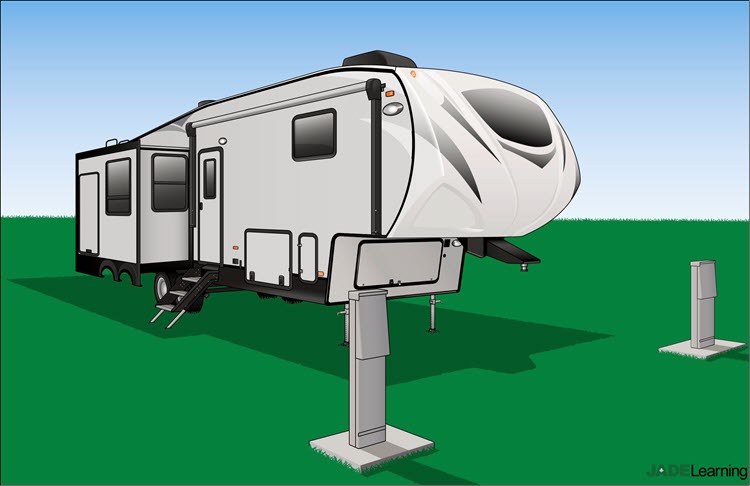2020 NEC – Tentative Interim Agreement RV Vehicles & Parks, Section 551.71(F), GFCI Protection

By: Robert Key | Jun 02, 2021
We receive an updated edition of the NEC every three years, but codes are often updated during a given code cycle by a Tentative Interim Agreement (TIA). A TIA is different from a change when a new edition is produced. It does not go through the entire standard development process. TIAs become an enforceable part of the code when they are published, and then automatically go through the development process for the next code cycle. Any official NFPA standard is comprised of the current code and any TIAs (or errata) that have been published.
We are going to examine a TIA issued for the 2020 NEC regarding GFCI protection for recreational vehicle (RV) parks, covered in Article 551 of the NEC. The popularity of RVs continues to increase, especially during the pandemic. We also know that GFCI protection continues to be expanded with each successive code cycle. This TIA was published to clarify where protection is required in an RV park.
If we look only at Section 210.8 of the Code, we might conclude that the 30- and 50-amp RV plugs must be GFCI protected. Section 210.8(B), Other Than Dwelling Units, reads:
All 125-volt through 250-volt receptacles supplied by single-phase branch circuits rated 150 volts or less to ground, 50 amperes or less, and all receptacles supplied by three-phase branch circuits rated 150 volts or less to ground, 100 amperes or less, installed in the locations specified in 210.8(B)(1) through (B)(12) shall have ground-fault circuit-interrupter protection for personnel.
This would seem to indicate that the 15-, 20-, 30- and 50-amp receptacles in an RV park would need Class A GFCI protection. Additionally, there was nothing in the Code language found in Article 551 that would modify the requirement for this application. The apparent conflict here led to much confusion and has even caused projects to be cancelled or shut down. Hence, clarification was needed via a TIA. Section 551.71(F), GFCI Protection, states:
2020 NEC Text
All 125-volt, single-phase, 15- and 20-ampere receptacles shall have listed ground-fault circuit-interrupter protection for personnel. The GFCI devices used in RV site electrical equipment shall not be required to be weather or tamper-resistant in accordance with 406.9 and 406.12.
Informational Note: The percentage of 50 ampere sites required by 551.71 could be inadequate for seasonal recreational vehicle sites serving a higher percentage of recreational vehicles with 50 ampere electrical systems. In that type of recreational vehicle park, the percentage of 50-ampere sites could approach 100 percent.
TIA Text
Ground-fault circuit-interrupter protection shall be provided as required in 210.8(B). GFCI protection shall not be required for other than 125-volt, 15- and 20-ampere receptacles used in recreational vehicle site equipment.
But why doesn’t Section 210.8(B) apply to these outlets? Why was the TIA issued?
There are two reasons, made clear by the Informational Notes found in Section 551.71(F) TIA:
- Informational Note No. 1: Appliances used within the recreational vehicle can create leakage current levels at the supply receptacle(s) that could exceed the limits of a Class A GFCI device. The cumulative leakage could exceed the trip threshold of a Class A GFCI protection, resulting in nuisance tripping. A customary practice for curing this is clipping off the ground pin on the RV feeder cord, which could have disastrous results.
- Informational Note No. 2: The definition of Power-Supply Assembly in 551.2 and the definition of Feeder in Article 100 clarifies that the power supply cord to a recreational vehicle is considered a feeder. These plug-and-cord connections are considered to be feeders, not receptacles. Since feeders are not required to have GFCI protection for personnel, the requirements of Section 210.8 would not apply to them.
The intent of this TIA is to clear up a potential conflict in the Code. Although the TIA has not been processed through the entire standards development process, it is enforceable code language. It is interim since it is effective only between editions of the Code. It is automatically considered for the next code cycle and will be subjected to all of the procedures of the standards development process. This is a good example of why it is important for both installers and inspectors to keep up with code changes that occur between cycles.
1 thought on “2020 NEC – Tentative Interim Agreement RV Vehicles & Parks, Section 551.71(F), GFCI Protection”
Comments are closed.



good day to all Electrician Best Regards
1st follow Electrical safety Protocols
Scope work area, I.D.Possible Hazardz
Use the right tools for the job